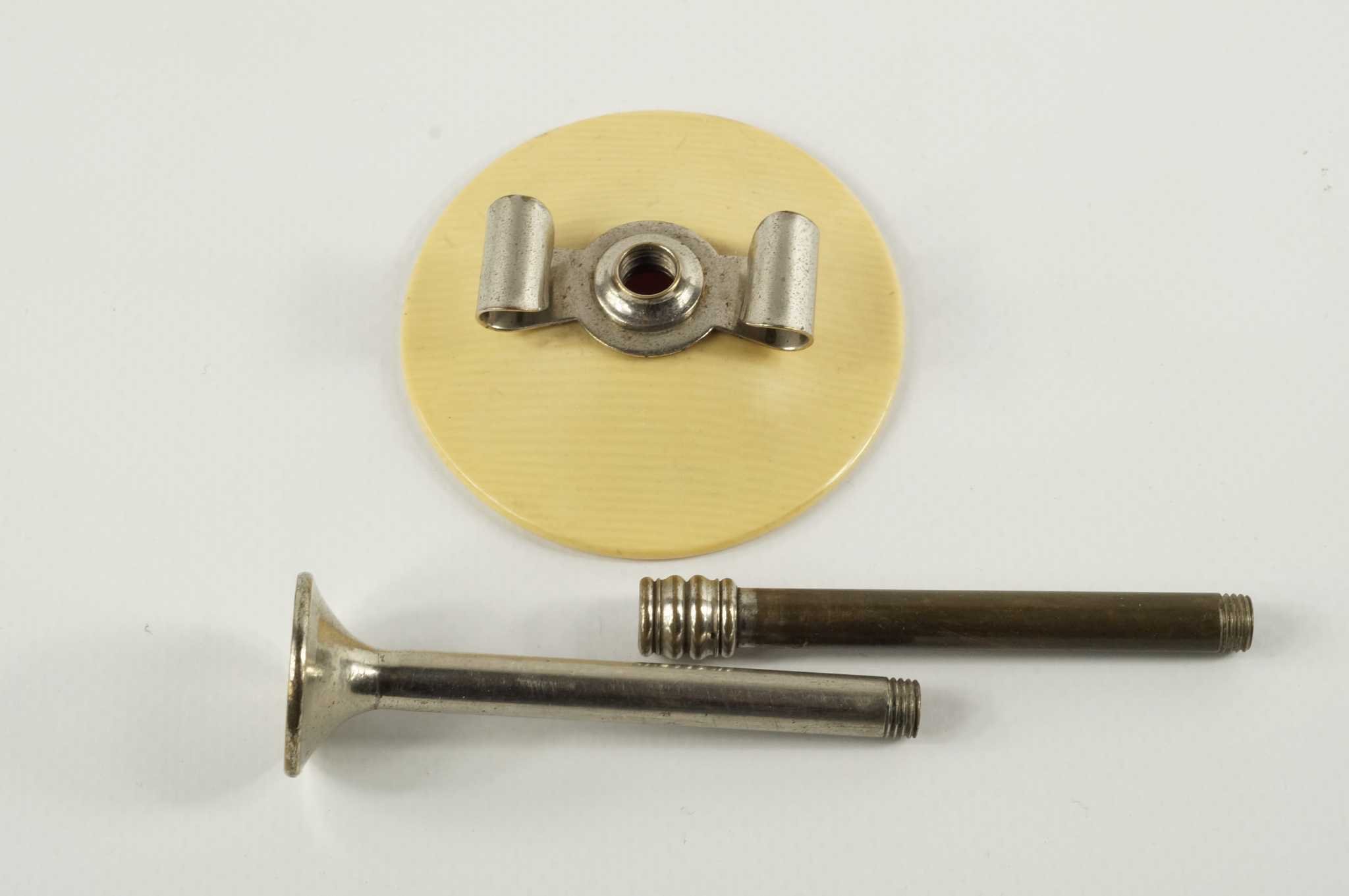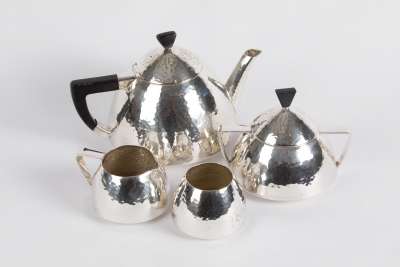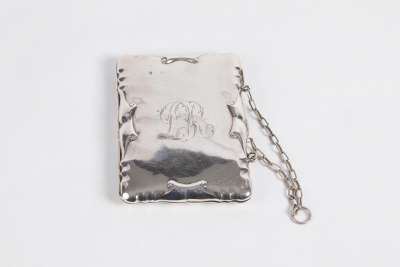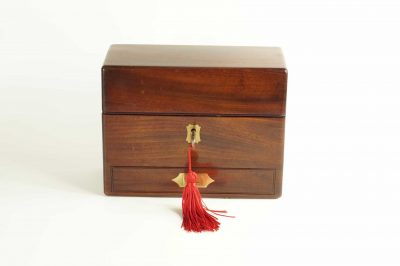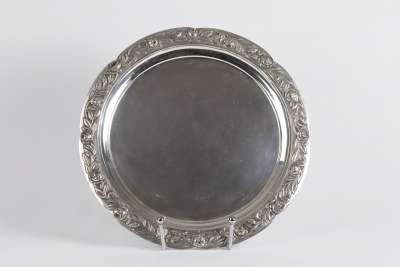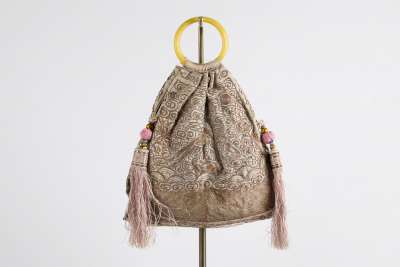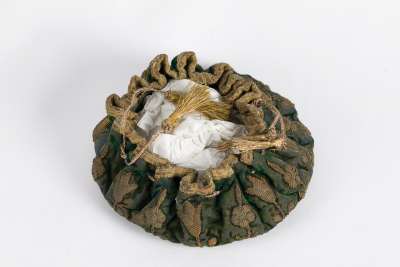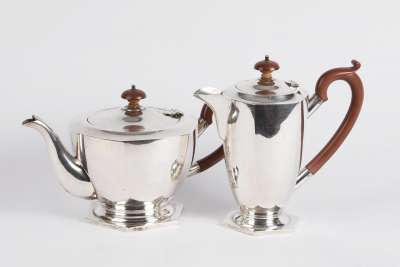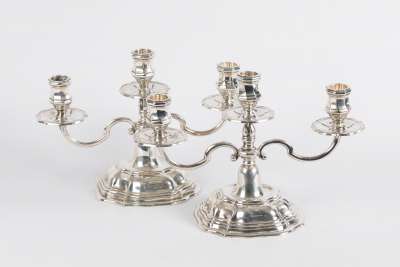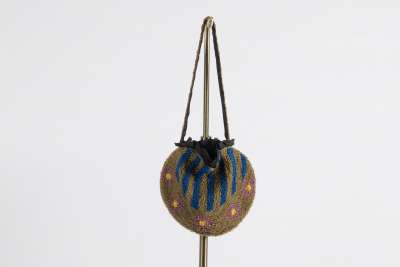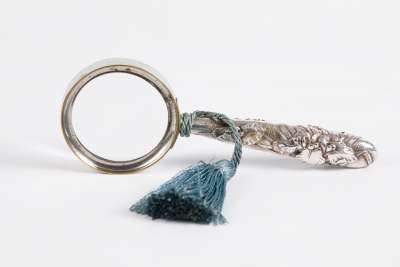This exquisite three-piece pocket monaural stethoscope originates from England and dates back to circa 1870. Constructed from ivorine and nickel, this antique medical instrument showcases the craftsmanship of its era. With its compact design, the stethoscope can be disassembled into three parts, allowing it to be conveniently carried in a pocket. When assembled, the bell-shaped end is placed on the patient's body, while the flat end is held to the physician's ear, exemplifying the innovative medical practices of the 19th century.
Condition Report
This English monaural stethoscope is in very good condition, exhibiting minimal wear consistent with its age and use. The ivorine and nickel components have been well-preserved, reflecting the quality of materials used in its construction. There are no significant scratches or dents, and the assembly mechanism remains functional. This piece has been carefully maintained, allowing it to retain its integrity and functionality over the years. Collectors and medical enthusiasts will appreciate its excellent condition, making it a valuable addition to any collection of historic medical instruments.
Dimensions
Weight: 35gm, Length: 7.5cm, Width: 6.2cm, Height: 2cm (14cm when assembled).
A Pocket Companion for Physicians
The original intended use of this monaural stethoscope was to aid physicians in the diagnosis of patients by listening to the internal sounds of the body. Its compact and portable design allowed doctors to carry it easily in their pockets, making it a practical tool for medical practitioners on the go. The stethoscope's innovative design provided a reliable means for auscultation, paving the way for modern diagnostic techniques. This piece is a testament to the evolution of medical instruments and the ingenuity of 19th-century physicians.
Victorian Era Medical Innovation
This monaural stethoscope is a fine example of Victorian-era medical innovation. During this period, the focus was on improving medical technology and techniques to enhance patient care. The design of this stethoscope reflects the era's emphasis on functionality, portability, and precision. The use of ivorine and nickel not only highlights the available materials of the time but also demonstrates the period's advancements in material science. Collectors of Victorian medical instruments will find this piece a noteworthy representation of its time.
The Craft of Ivorine and Nickel Work
Crafted during the late 19th century, this stethoscope showcases the skilled use of ivorine and nickel. Ivorine, a synthetic material resembling ivory, was commonly used during this period for its durability and ivory-like appearance. The nickel components provide structural strength and resistance to corrosion, ensuring the instrument's longevity. The meticulous assembly of the stethoscope's parts reflects the high level of craftsmanship and attention to detail characteristic of the period, making it a valuable example of 19th-century medical instrument manufacturing.
Attributed to English Artisans
While the specific maker of this stethoscope remains unidentified, it is attributed to skilled English artisans known for their expertise in crafting medical instruments. England, during the 19th century, was a hub of medical innovation and craftsmanship. The artisans who produced this stethoscope were likely part of a tradition of excellence in medical equipment manufacturing, contributing to the country's reputation for quality and precision. This piece embodies the skill and dedication of English craftsmen of the era, making it a noteworthy addition to any collection.
Collected by Medical History Enthusiasts
Antiques like this monaural stethoscope are highly sought after by collectors interested in the history of medicine. These instruments provide insight into the evolution of medical technology and the practices of past centuries. Collectors value the historical significance, craftsmanship, and the stories that these pieces carry. This stethoscope, in particular, is a tangible connection to the 19th-century medical field, offering a glimpse into the diagnostic methods used by physicians of the time. Its enduring appeal lies in its historical context and the craftsmanship that continues to captivate enthusiasts of medical history.

